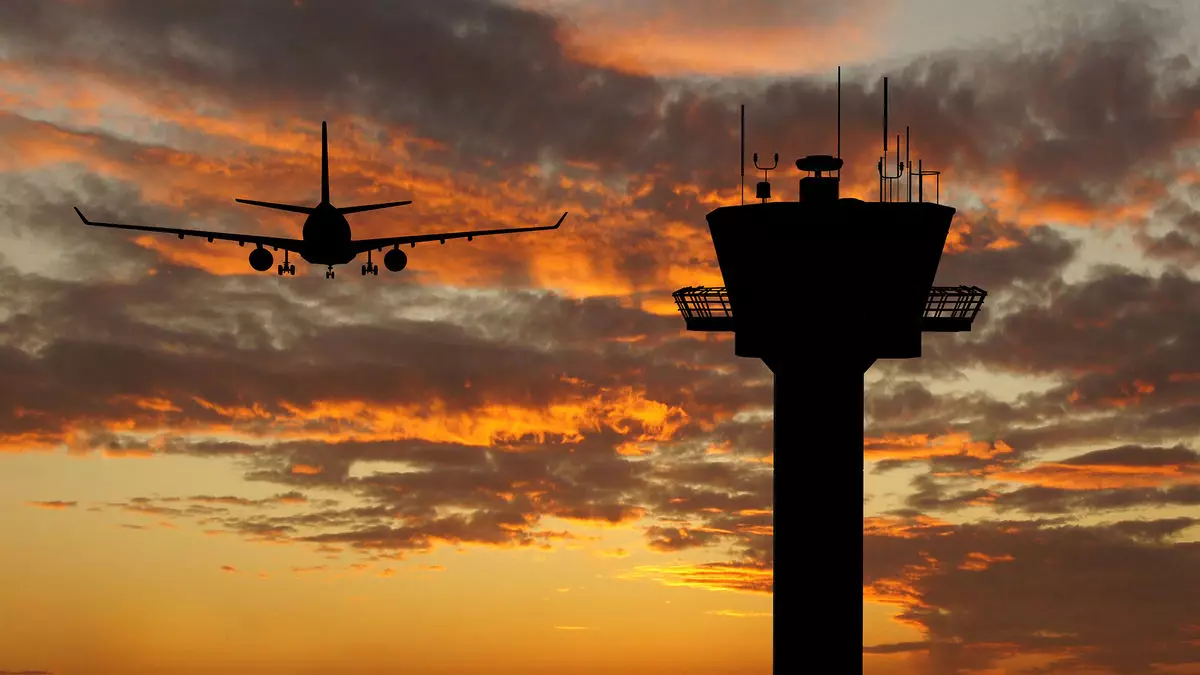The aviation industry stands at a pivotal juncture where the safety and efficiency of air travel are of utmost importance. President Trump’s recent remarks highlighting the necessity of transitioning to a state-of-the-art computerized air traffic control system resonate deeply, particularly in light of tragic incidents such as the midair collision of an American Eagle jet with an Army helicopter near Washington, D.C. on January 29. With 67 lives lost in this preventable disaster, it begs the question: how can we ensure that our air traffic management systems evolve to meet contemporary safety standards?
The existing air traffic control system in the United States has long been criticized for being outdated. Established decades ago, it relies heavily on manual processes and antiquated technology that struggles to keep pace with the increasing volume of air travel. As air traffic surges, so too do the risks associated with an inefficient and fragile infrastructure. President Trump’s assertion that the current system is “obsolete” mirrors the concerns of many industry experts who believe that the lack of modernization poses a grave threat to aviation safety.
Moreover, Trump’s declaration that advanced systems are already in use in other nations underscores a critical shortcoming in the U.S. approach to air traffic management. Other countries have successfully implemented modern, efficient, computerized systems, resulting in fewer accidents and higher levels of safety for passengers. The need to not only match but surpass these global standards is imperative if the U.S. is to maintain its reputation as a leader in aviation.
In response to these challenges, the call for a comprehensive overhaul of the air traffic control system is gaining momentum. Trump emphasized that the development of a new, fully integrated air traffic control system could eliminate the probability of such tragic accidents occurring in the future. He expressed confidence in the capability of professionals to deliver a rapid and cost-effective solution that would enhance safety across the aviation landscape.
However, while promises of quick solutions are enticing, the realities of implementation must be carefully considered. Aviation systems are notoriously complex, requiring extensive coordination between federal agencies, airlines, and technology providers. In light of the challenges faced by the FAA’s NextGen modernization program, which has struggled to deliver on its transformative promises, a clear strategy for realizing ambitious goals will be essential.
The U.S. Travel Association has expressed optimism about the administration’s commitment to addressing longstanding issues within the air traffic control sector. Their call for significant investment reflects the consensus that immediate action is necessary to ensure both passenger safety and the overall efficiency of air travel.
The collaboration between private and public sectors will play a crucial role in this endeavor. Working together, stakeholders can pool resources and expertise to achieve the desired outcomes. This is particularly pertinent in light of critiques that highlight flaws in the existing NextGen framework, which while expensive and time-consuming, had promised far-reaching improvements. Clear communication from the administration regarding their vision for a new system versus an enhancement of NextGen will be vital.
The pathway to a safer and more efficient air traffic control system is laden with challenges but is undeniably critical for the future of American aviation. The tragic loss of lives should serve as a wake-up call, urging all parties involved to commit to enduring changes that could prevent similar accidents from recurring. Trump’s ambitious vision for a new computerized system has the potential to revolutionize air traffic management; however, its success will hinge on transparent policies, effective collaboration, and the unwavering dedication of all stakeholders to prioritize the safety of passengers.
Moving forward, it is essential that the administration articulates a clear plan, one that reassures the public and the aviation industry of their commitment to improving air traffic safety. Embracing modernization is not merely an operational necessity; it is a moral imperative that must guide our actions in the coming years.


Leave a Reply